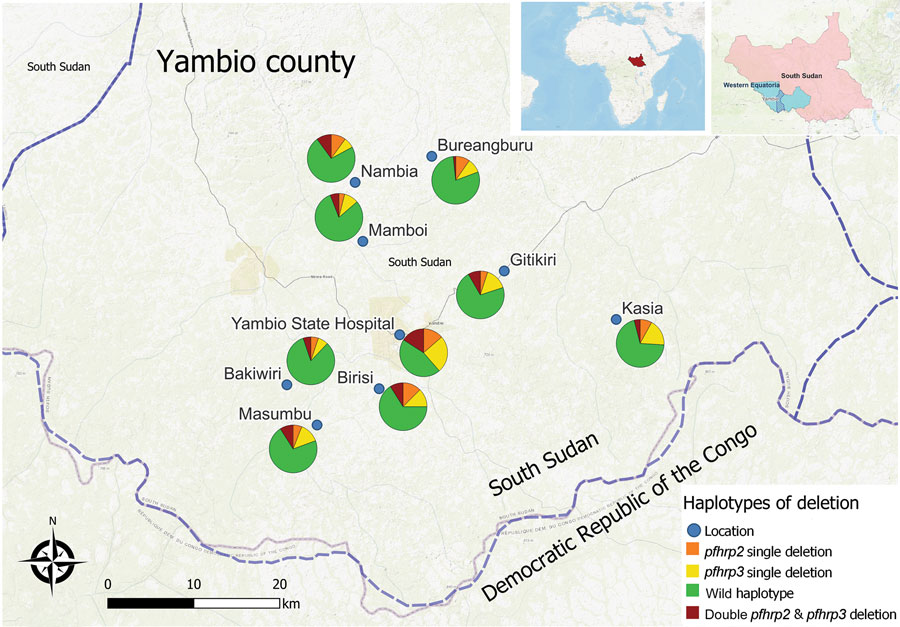Volume 29, Number 1—January 2023
Dispatch
Plasmodium falciparum pfhrp2 and pfhrp3 Gene Deletions in Malaria-Hyperendemic Region, South Sudan
Figure 1

Figure 1. Frequencies of Plasmodium falciparum single and double pfhrp2 and pfhrp3 deletions in malaria-hyperendemic region, South Sudan. Color represents the type of deletion and proportion of each type of deletion and genotype. Open source QGIS software (https://www.qgis.org) was used to map sample collection locations. Inset map shows locations of the study area in South Sudan and of South Sudan in Africa.
1These authors contributed equally to this article.
Page created: November 17, 2022
Page updated: December 22, 2022
Page reviewed: December 22, 2022
The conclusions, findings, and opinions expressed by authors contributing to this journal do not necessarily reflect the official position of the U.S. Department of Health and Human Services, the Public Health Service, the Centers for Disease Control and Prevention, or the authors' affiliated institutions. Use of trade names is for identification only and does not imply endorsement by any of the groups named above.